“Black Square” by Malevich: why it is a masterpiece (13 photos)
Everyone has thought about the paradox of Malevich’s “Black Square”.
You can't think of anything simpler than a black square. There is nothing easier than drawing a black square. Nevertheless, it is recognized as a masterpiece. 
If it goes to public auction today, they will be ready to buy it for $140 million!
How did this “misunderstanding” arise? The primitive image is recognized as a masterpiece by all art critics around the world. Did they conspire?
Clearly there is something special about Black Square. Invisible to the average viewer. Let's try to discover this “something”.
1. “Black Square” is not as simple as it seems.
It is only at first glance that it seems that anyone could create such a masterpiece. Both a child and an adult without art education.
A child would not have the patience to paint such a large surface with one color.
But seriously, even an adult could hardly repeat “Black Square,” because not everything in this picture is so simple.
The black square is NOT actually black
The “black square” is not actually a square. Its sides are NOT equal to each other. And opposite sides are NOT parallel to each other.
Besides, “Black Square” is NOT completely black.
Chemical analysis showed that Malevich used three homemade paints. The first is burnt bone. The second is black ocher. And the third is another natural component... dark green. Malevich also mixed in CHALK. To remove the gloss effect inherent in oil paints.
That is, the artist did not just take the first black paint he came across and paint over the drawn square. He spent at least a day preparing materials.
There are four "Black Squares"
If it were a random painting, the artist would not copy it. Over the next 15 years, he created 3 more “Black Squares”.
If you have seen all 4 paintings (two are kept in the Tretyakov Gallery, one in the Russian Museum, one in the Hermitage), then you probably noticed how NOT similar they are.
Yes Yes. Despite their simplicity, they are different. The first “Square” of 1915 is considered the most energetically charged. It's all about the successful selection of shades of black and white, as well as the composition of the paints.
All four paintings are not similar in size or color. One of the “Squares” is larger in size (created in 1923, kept in the Russian Museum). The other one is much blacker. It is the most dull and all-consuming in color (also kept in the Tretyakov Gallery).
Below are all four “Squares”. The difference in reproductions is difficult to understand. But maybe this will inspire you to watch them live! 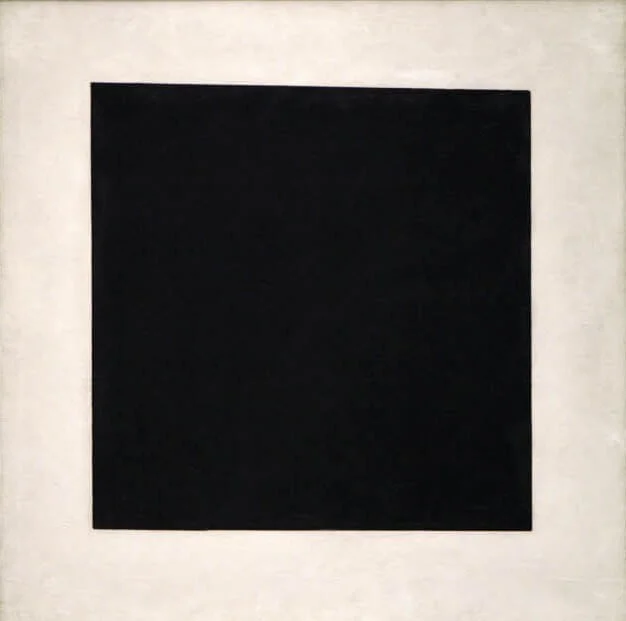



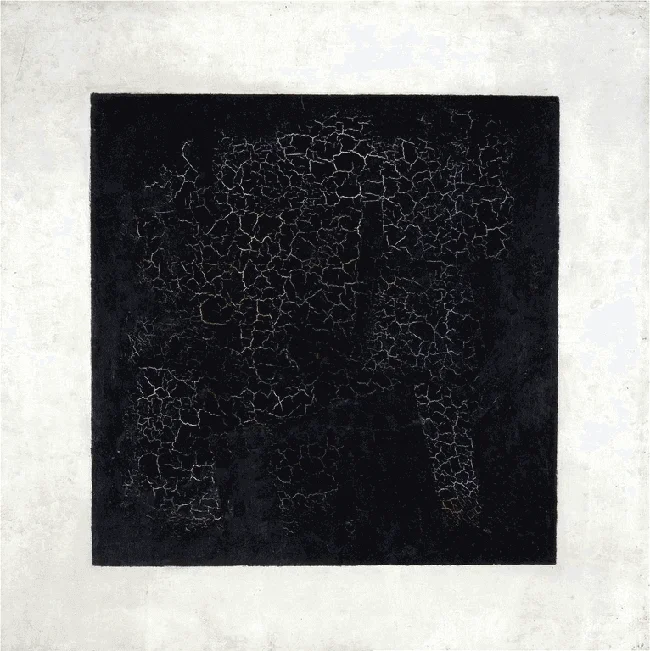
“Black Square” closes two more paintings
You probably noticed cracks (craquelures) on the 1915 Kvadrat. The bottom layer of paint is visible through them. These are the colors of another painting. It was written in a proto-Suprematist style. Something like "The Lady at the Lamp Post."
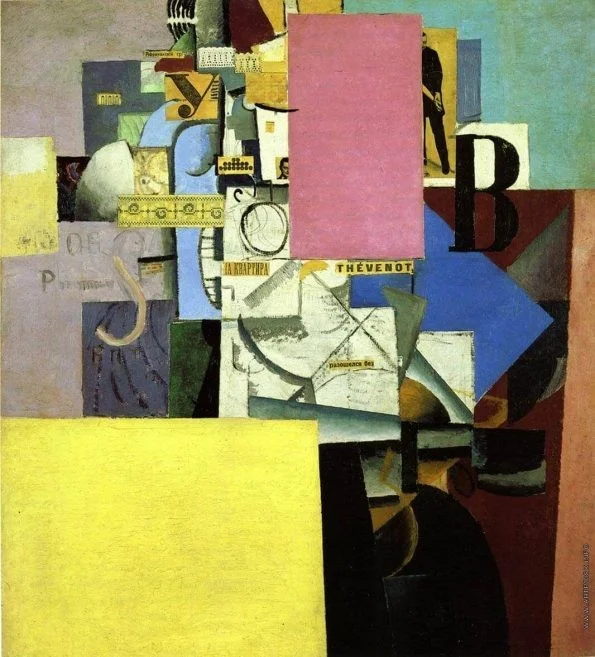
Kazimir Malevich. Lady at the lamppost. 1914. Stedelek City Museum, Amsterdam
That's not all. Below it is another image. Already the third in a row. Written in the style of cubo-futurism. This is what this style looks like.

Kazimir Malevich. Grinder. 1912. Yale University Art Gallery, New Haven.
That's why craquelures appeared. The paint layer is too thick.
Why such difficulties? As many as three images on one surface!
Perhaps this is an accident. It happens. The artist gets an idea. He wants to express it right away. But you may not have a canvas at hand. But even if there is canvas, it needs to be prepared and primed. Then insignificant paintings are used. Or those that the artist considers unsuccessful.
The result was a sort of picturesque nesting doll. Evolution. From Cubo-Futurism to Cubo-Suprematism and to pure Suprematism in the “Black Square”.
2. Strong theory of strong personality
“Black Square” was created within the framework of a new direction in painting invented by Malevich. Suprematism. Supreme means "superior". Since the artist considered it the highest point in the development of painting.
This is a whole school. Like impressionism. Like academicism. Only this school was created by one person. Kazimir Malevich. He attracted many supporters and followers to his side.
Malevich knew how to speak clearly and charismatically about his brainchild. He zealously campaigned for a complete abandonment of figurativeness. That is, from the image of objects and objects. Suprematism is an art that creates, and does not repeat, as the artist said.
If we remove the pathos and look at his theory from the outside, then we cannot help but recognize its greatness. Malevich, as befits a genius, felt which way the wind was blowing.
The time for individual perception was ending. What did this mean? Previously, only a select few admired works of art. Those who owned them. Or he could afford to walk to the museum.
Now the age of mass culture was coming. When simplified forms and pure colors are important. Malevich understood that art should not lag behind. And maybe even able to lead this movement.
He invented, in fact, a new pictorial language. Commensurate with the coming time that is about to come. And the language has its own alphabet.
The “black square” is the main sign of this alphabet. “Zero forms,” as Malevich said.
Before Malevich, there was another alphabet, invented by Giotto at the beginning of the 14th century. This alphabet was the basis of all art. This is perspective. Volume. Emotional expressiveness.
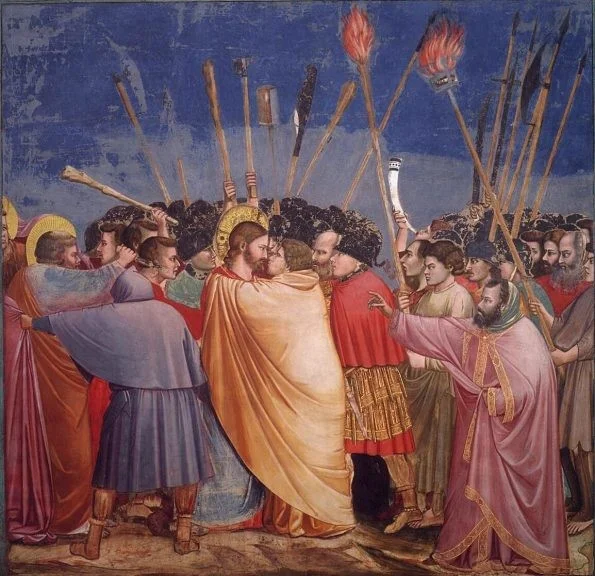
Giotto. Kiss of Judas. 1303-1305. Fresco in the Scrovegni Chapel in Padua, Italy.
Malevich's language is completely different. Simple color forms in which color is assigned a different role. It is not intended to convey nature. And not to create the illusion of volume. It is expressive in its own right.
“Black Square” is the main “letter” in the new alphabet. Square because it is the first form. Black color because it absorbs all colors.
Together with the “Black Square” Malevich creates the “Black Cross” and “Black Circle”. Simple elements. But they are also derivatives of the black square.
A circle appears if the square is rotated on a plane. The cross consists of several squares.
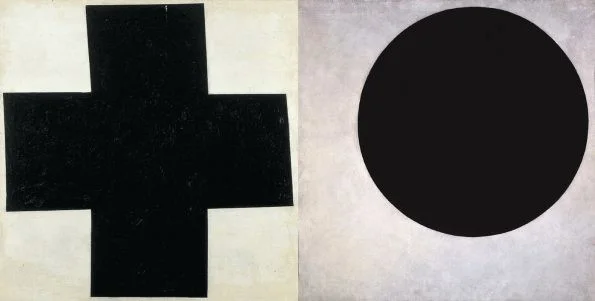
Paintings by K. Malevich. Left: Black cross. 1915. Center Pompidou, Paris. Right: Black circle. 1923. Russian Museum, St. Petersburg.
Then Malevich creates new “words” from his alphabet. He combines color forms in simple, complex and very complex combinations.
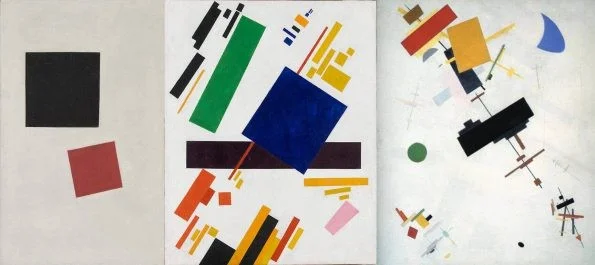
Paintings by K. Malevich. Left: Black square and red square. 1915. Museum of Modern Art, New York. Middle: Suprematist composition. 1916. Private collection. Right: Suprematism. 1916. Russian Museum, St. Petersburg.
Malevich painted in the style of Suprematism for several years. And then the incredible happened. He denied figurativeness for so long that... he returned to it.
This could be seen as inconsistency. Like, I “played” with a beautiful theory and that’s enough.
In fact, the language he created was hungry for use. Applications in the world of forms and nature. And Malevich obediently returned to this world. But he portrayed it using the new language of Suprematism.
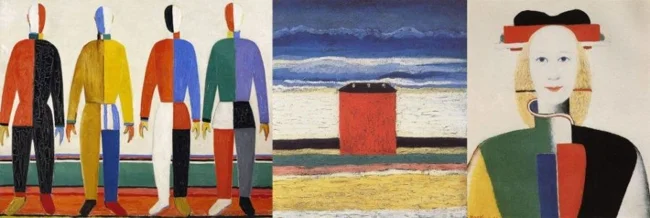
Paintings by Kazimir Malevich. Left: Athletes. 1932. Russian Museum. Middle: Red House. 1932. Ibid. Right: Girl with a comb in her hair. 1934. Tretyakov Gallery.
So “Black Square” is not the end of art, as it is sometimes labeled. This is the beginning of a new painting.
Then a new stage began. Language wanted to serve people. And he passed into our lives.
3. Huge impact on living space
Having created Suprematism, Malevich did everything so that it would not gather dust in museums, but would go to the masses.
He drew sketches of dresses. But during his lifetime he was able to “put them on” only on the heroes of his paintings.
Kazimir Malevich. Portrait of the artist's wife. 1934 Russian Museum. Wikiart.org
He also painted porcelain. Created designs for fabrics.
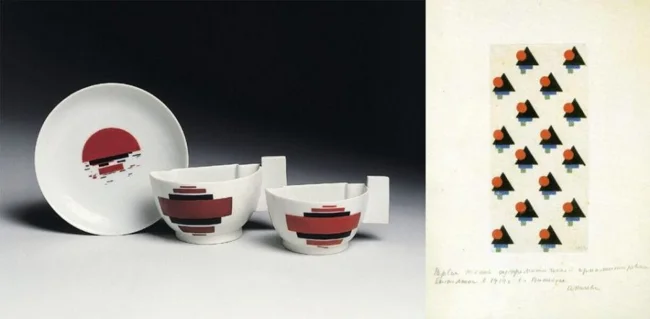
Left: a service from the Leningrad Porcelain Factory, created according to Malevich’s sketches (1922). Right: a sample of fabric with a drawing by Malevich (1919).
Malevich’s supporters began to speak the language of the “Black Square”. The most famous of them is El Lissitzky, who invented printing fonts as well as new book designs.
He was inspired by the theory of Suprematism and Malevich’s “Black Square”.
El Lissitzky. Cover of Vladimir Mayakovsky’s book “Good!” 1927
Designing books like this seems natural to us. But only because Malevich’s style has firmly entered our lives.
Our contemporaries, designers, architects and fashion designers do not hide the fact that all their lives they have drawn inspiration from the works of Malevich. Among them is one of the most famous architects, Zaha Hadid (1950-2016).
Left: Dominion Tower. Architect: Zaha Hadid. Construction 2005—2015 Moscow (metro station Dubrovka). In the center: Table “Malevich”. Alberto Lievore. 2016 Spain. Right: Gabrielo Colangelo. Spring-summer 2013 collection
4. Why “Black Square” is puzzling and why it is still a masterpiece
Almost every viewer tries to understand Malevich using the familiar language of natural images. The same one that was invented by Giotto and which was developed by the artists of the Renaissance.
Many people try to evaluate “Black Square” using inappropriate criteria. Like it or not. Beautiful - not beautiful. Realistic - not realistic.
Awkwardness sets in. Discouragement. Because “Black Square” remains deaf to such assessments. What remains? Only condemn or ridicule.
Daub. Nonsense. “The child can draw better” or “I can do that too” and so on.
Now evaluate “Black Square” as a letter of the alphabet. Like an atom of a molecule. Like an electron in a magnetic field.
Then it will become clear why this is a masterpiece. It is impossible to evaluate “Black Square” on its own. But only together with the space it serves.
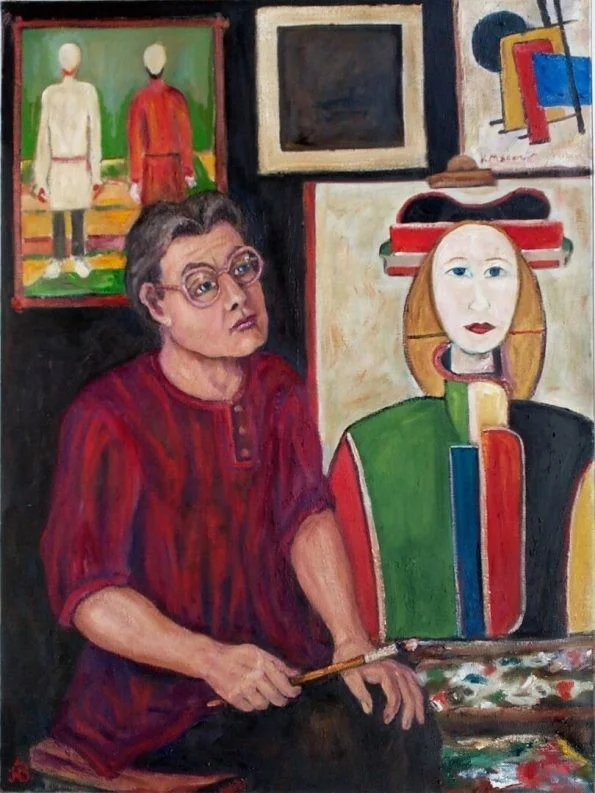
Andrey Allahverdov. Kazimir Malevich. 2016. Private collection
PS.
Malevich was famous during his lifetime. But he did not receive any material benefit from this. Going to an exhibition in Paris in 1929, he asked the authorities to let him go there... on foot. Because he didn’t have money for the trip.
The authorities realized that Comrade Malevich, who came to Europe on his own two feet, would undermine their authority. Therefore, 40 rubles were allocated for the trip.
True, after 2 weeks he was urgently called back by telegram. And upon arrival he was immediately arrested. By denunciation. Like a German spy.
No more exhibitions. No suprematism. In the USSR, only socialist realism is possible.
The artist died of cancer in 1935.

